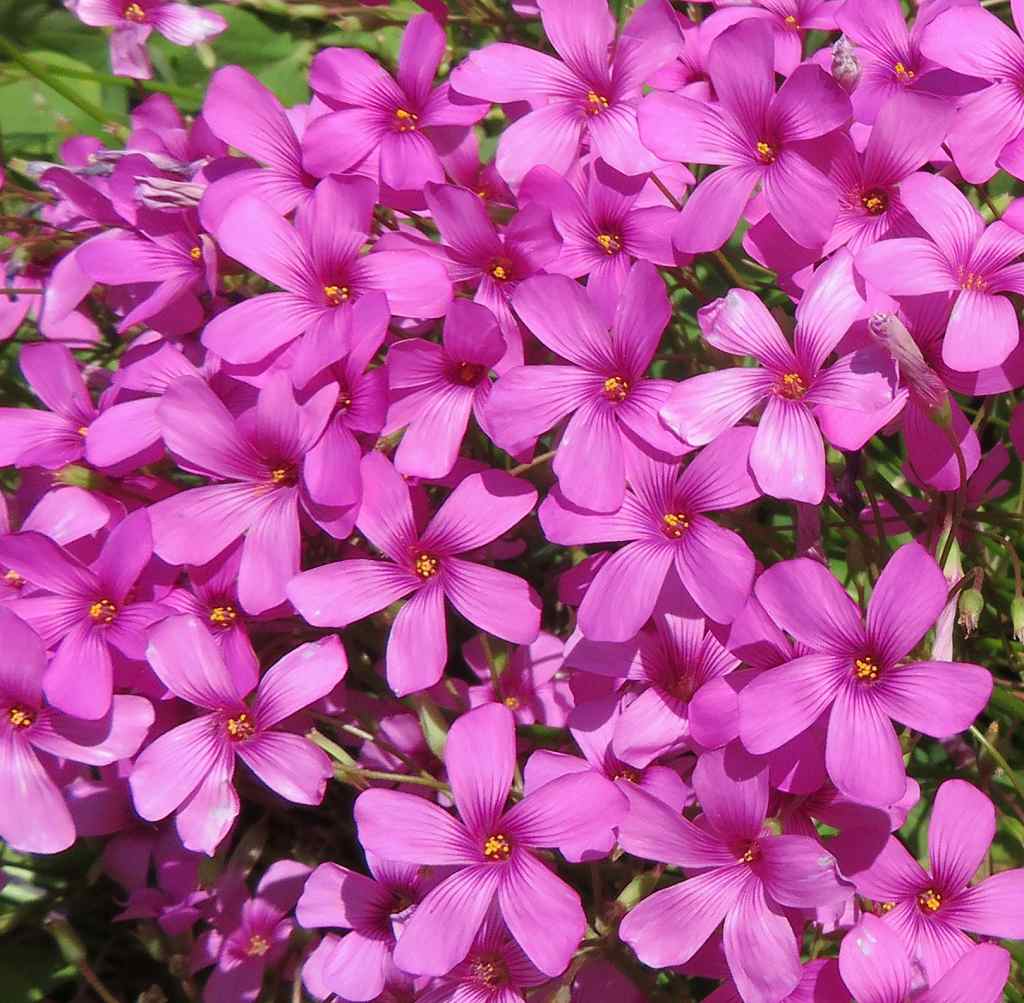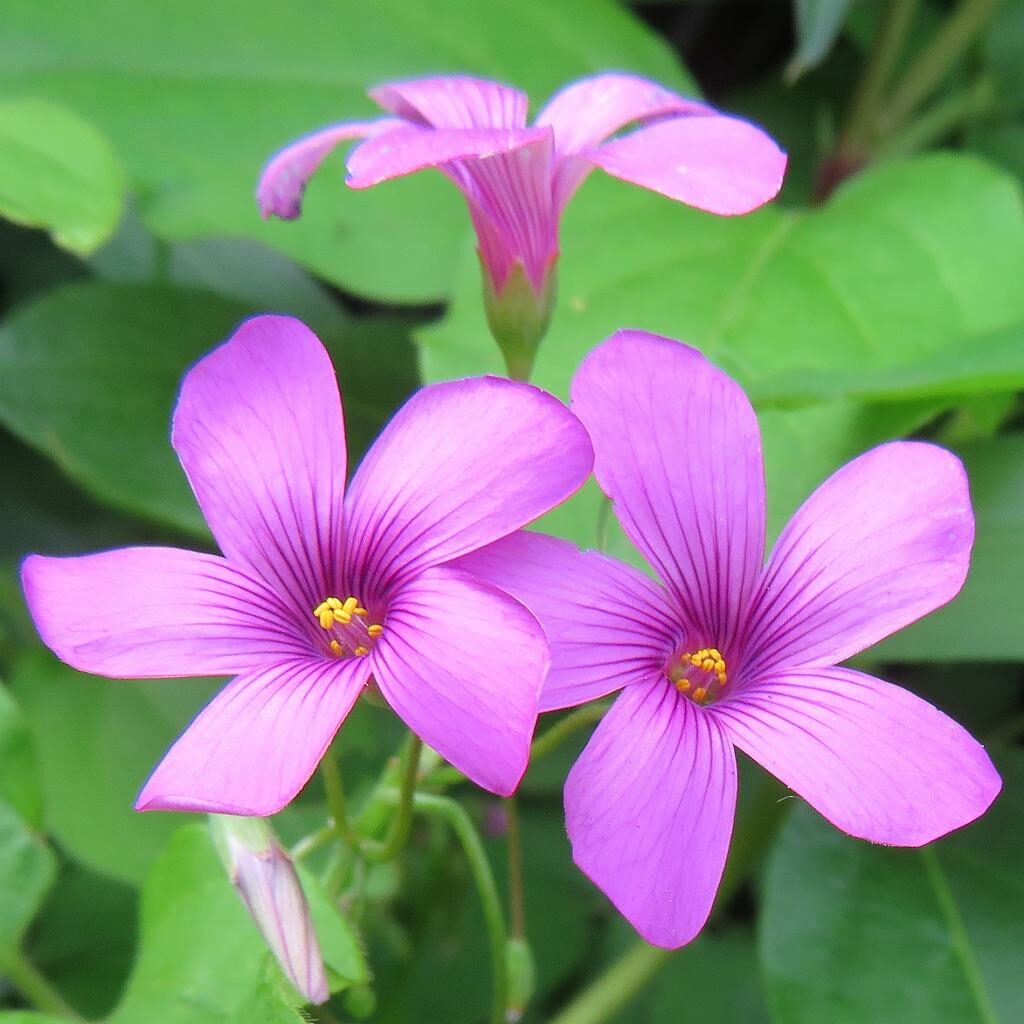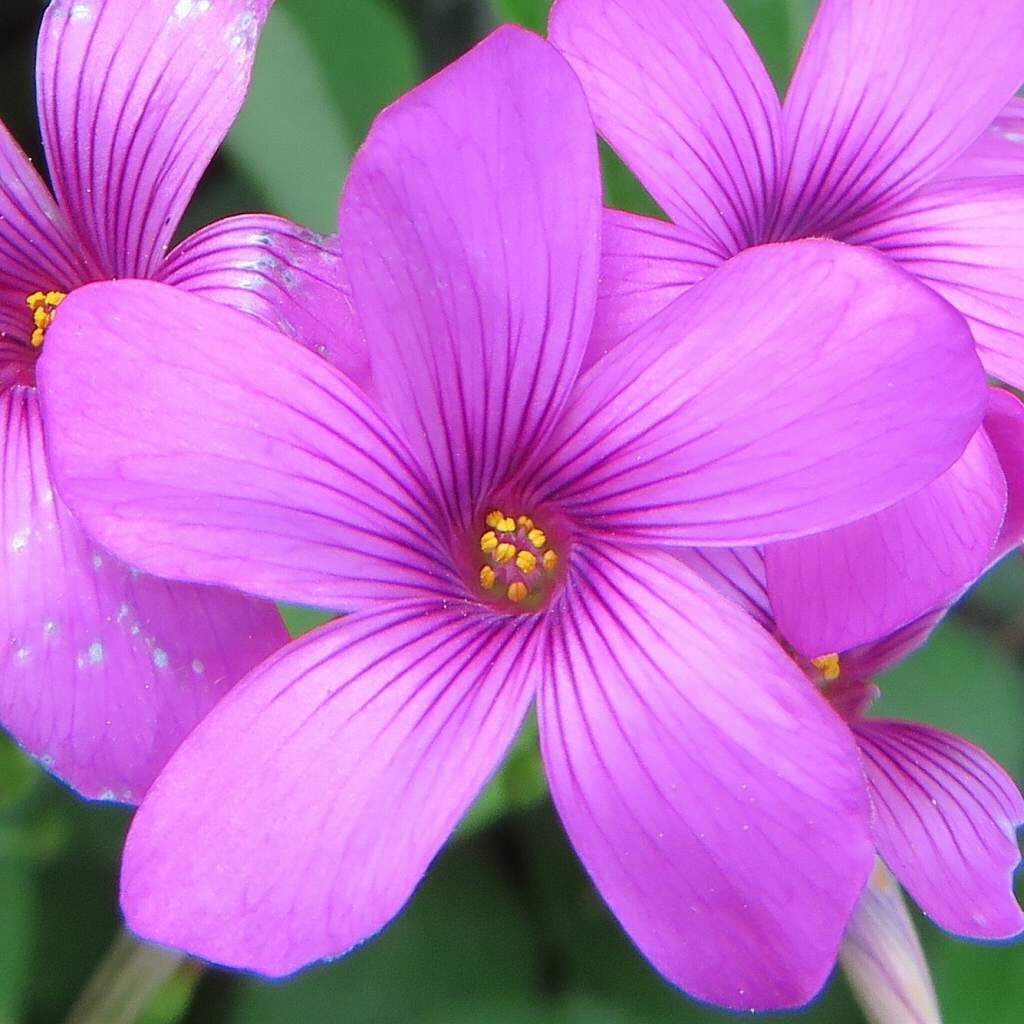イモカタバミの花は花弁も花筒も桃色で、紫色の筋が入ります。種子と塊茎の両方で繁殖するものの増殖は緩やか。穏やかで控えめな花です。
The petals and tube of the pink sorrel are pink and have purple streaks. It breeds on both seeds and stalks, but grows slowly. It is a gentle and discreet flower.
【仮名】イモカタバミ, フシネハナカタバミ
【和名】芋片喰, 節根花片喰
【英名】Pink Sorrel, Wood Sorrel
【学名】Oxalis articulata
【誕生】05/ 20, 05/ 27, 06/ 22, 06/ 25, 10/ 01
【開花】04, 05, 06, 07, 08, 09月
【花色】White, Purple



イモカタバミ
イモカタバミの生態
イモカタバミはカタバミ科の多年草です。原産地はブラジル、ウルグアイ、パラグアイ、アルゼンチンなど南米の高地。日本へは第二次世界大戦後、観賞用に導入されたものが逸出し、北海道から沖縄まで広く帰化。道端や空き地などで春の終わりから秋の半ばまで花が咲き続けます。
イモカタバミの塊茎
イモカタバミの和名「芋片喰」の由来は地下でイモのように丸い塊茎が連なっているから。別名も「節根花片喰」で、ラテン語の種名も「節目のある」という意味です。分類は節根花片喰が基本種で、芋片喰がその変種。でも、ややこしいことに基本種の種名は変種と同じ芋片喰です。
イモカタバミの花
イモカタバミは塊茎から花茎が伸長。花は花弁も花筒も桃色で紫色の筋が入り、雄しべの葯が黄色。一方、花が似ている「紫片喰」は、花弁が同じ桃色でも、花筒が黄緑色で、雄しべの葯が白色の近縁種です。また「白花芋片喰」は花色が異なるものの同種。園芸名は「アルバ」です。
イモカタバミの葉
イモカタバミは塊茎から葉が直に伸長。いわゆる「3出複葉」です。ハート形で線対称の小さな葉が3枚、それぞれ尖っているほうが向かい合って大きな葉を形成。花がよく似ている「紅片喰」は葉が小さく、葉に浅い切れ込みが入り、紫片喰は葉が薄く、葉の表面にツヤがあります。
イモカタバミの種子
イモカタバミは花が咲き終わると果実ができ、熟すと下が裂けて種子が落下。一方、紫片喰は、夏が暑すぎる日本では種子を着けませんが、鱗茎と牽引根で多数の木子を散らし、急激に増殖します。芋片喰は種子と塊茎の両方で繁殖するものの増殖は緩やか。穏やかで控えめな花です。
Pink Sorrel
Pink sorrel is a perennial herb of the family Oxalis. The place of origin is the highlands of South America such as Brazil, Uruguay, Paraguay and Argentina. After World War II, the ones introduced to Japan for ornamental purposes escaped and were widely naturalized from Hokkaido to Okinawa. Flowers continue to bloom from late spring to mid-autumn on roadsides and vacant lots.
The origin of the Japanese name “Imokatabami: pink sorrel” is that there are a series of round lumps like potatoes in the basement. Another name is “Fushine Hanakatabami”, and the Latin species name also means “with knots”. Fushine Hanakatabami is the basic of the species, and Imokatabami is a variant of it. However, to complicate matters, the species name of the basic species is the same as the variant.
The flower stalk of the Pink sorrel grows from the mass stalk. The petals and barrels of the flowers are pink with purple streaks, and the anthers of the stamens are yellow. On the other hand, “Violet wood-sorrel”, which has similar flowers, is a closely related species whose petals are the same pink but whose flower tube is yellowish green and whose anthers are white. In addition, “Shirobana Imokatabami” is the same kind although the flower color is different. The gardening name is “Alba”.
The leaves of pink sorrel grow directly from the stalk. It is a so-called “three-out compound leaf”. There are three small heart-shaped, line-symmetrical leaves, each of which has a sharp point facing each other to form a large leaf. “Beni Katabami :Oxalis brasiliensis”, which have similar flowers, have small leaves and shallow cuts in the leaves, and violet wood-sorrel have thin leaves and a glossy surface.
When the flowers of the pink sorrel have finished blooming, fruits are produced, and when they ripen, the bottom splits and the seeds fall. On the other hand, violet wood-sorrel do not bear seeds in Japan, where the summer is too hot, but they scatter a large number of Kiko on the scales and tow roots and proliferate rapidly. Pink sorrel grows on both seeds and stalks, but grows slowly. It is a gentle and discreet flower.


